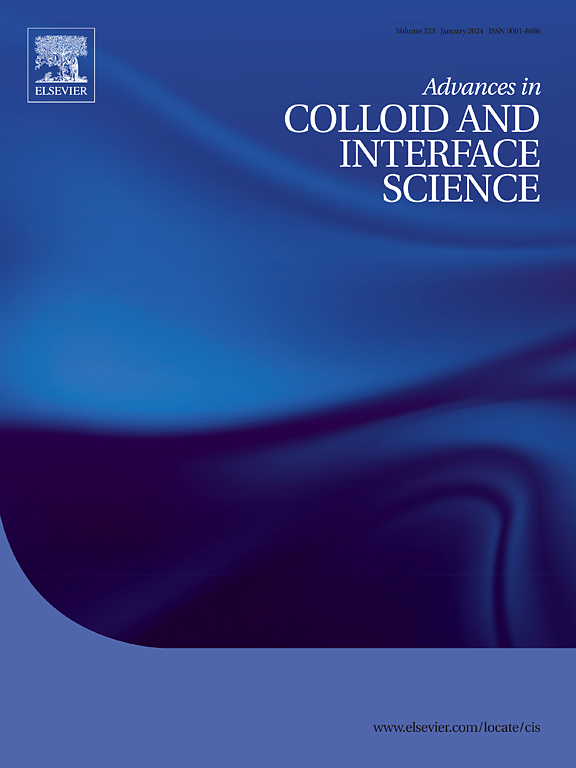绿色溢油解决方案:表面活性离子液体的作用综述。
IF 15.9
1区 化学
Q1 CHEMISTRY, PHYSICAL
引用次数: 0
摘要
石油泄漏对环境,特别是水生生态系统具有长期的有害影响。这篇综述全面概述了传统的溢油清除方法,突出了它们的优点和局限性。处理石油泄漏的传统方法,包括物理、热、生物和化学技术,往往被证明是不够的,化学分散剂是最流行的方法。然而,对这些分散剂的毒性和低生物降解性的担忧促使研究人员探索更有效和生态良性的替代品。近年来,表面活性离子液体(SAILs)因其两亲性、绿色和可生物降解的特性以及在各种温度和盐度条件下的优异性能而受到人们的关注。本文综述了帆状膜的分子组成,重点讨论了它们的头基、烷基链和反阴离子的作用。此外,本文还讨论了风帆的聚集行为、降低界面张力(IFT)的能力以及形成稳定乳液的潜力,这对有效分散油很重要。本综述还探讨了影响油品分散效果的关键环境因素,如温度和盐度。该研究调查了sail作为传统分散剂的环保替代品的可能性,同时也讨论了该行业面临的挑战和未来可能的发展方向。然而,风帆及其降解产物的长期环境效应仍然不确定,强调了未来研究的必要性。本文还讨论了SAIL配方的优化、对环境的影响以及大规模应用的可行性,为下一代溢油修复技术的发展提供了前瞻性的视角。本文章由计算机程序翻译,如有差异,请以英文原文为准。

Green solution for oil spills: A review on the role of surface-active ionic liquids
Oil spills have long-lasting and harmful impacts on the environment, particularly on aquatic ecosystems. This review provides a comprehensive overview of conventional methods for oil spill removal, highlighting both their advantages and limitations. Traditional methods for addressing oil spills, including physical, thermal, biological and chemical techniques, often prove insufficient, with chemical dispersants being the most popular approach. However, the concern about the toxicity and low biodegradability of these dispersants have led researchers to explore more effective and ecologically benign alternatives. Recently, surface-active ionic liquids (SAILs) have gained interest due to their amphiphilic nature, green and biodegradable characteristics, and excellent performance under various temperature and salinity conditions. In this review, the molecular composition of SAILs, with a specific emphasis on the roles of their head groups, alkyl chains, and counter anions, has been discussed. Additionally, the aggregation behavior of SAILs, their ability to reduce interfacial tension (IFT), and their potential to form stable emulsions, which are important for effective oil dispersion, has been also discussed in the paper. This review also examines key environmental factors such as temperature and salinity that influence the efficacy of oil dispersion using SAILs. The study investigates the possibilities of SAILs as an environmentally friendly substitute for conventional dispersants, while also discussing the challenges and possible future paths for the industry. However, the long-term environmental effects of SAILs and their degradation products are still uncertain, underscoring the necessity of future research. Insights into the optimization of SAIL formulations, their environmental impact, and the feasibility of large-scale application are also discussed, offering a forward-looking perspective on the development of next-generation oil spill remediation technologies.
求助全文
通过发布文献求助,成功后即可免费获取论文全文。
去求助
来源期刊
CiteScore
28.50
自引率
2.60%
发文量
175
审稿时长
31 days
期刊介绍:
"Advances in Colloid and Interface Science" is an international journal that focuses on experimental and theoretical developments in interfacial and colloidal phenomena. The journal covers a wide range of disciplines including biology, chemistry, physics, and technology.
The journal accepts review articles on any topic within the scope of colloid and interface science. These articles should provide an in-depth analysis of the subject matter, offering a critical review of the current state of the field. The author's informed opinion on the topic should also be included. The manuscript should compare and contrast ideas found in the reviewed literature and address the limitations of these ideas.
Typically, the articles published in this journal are written by recognized experts in the field.

 求助内容:
求助内容: 应助结果提醒方式:
应助结果提醒方式:


